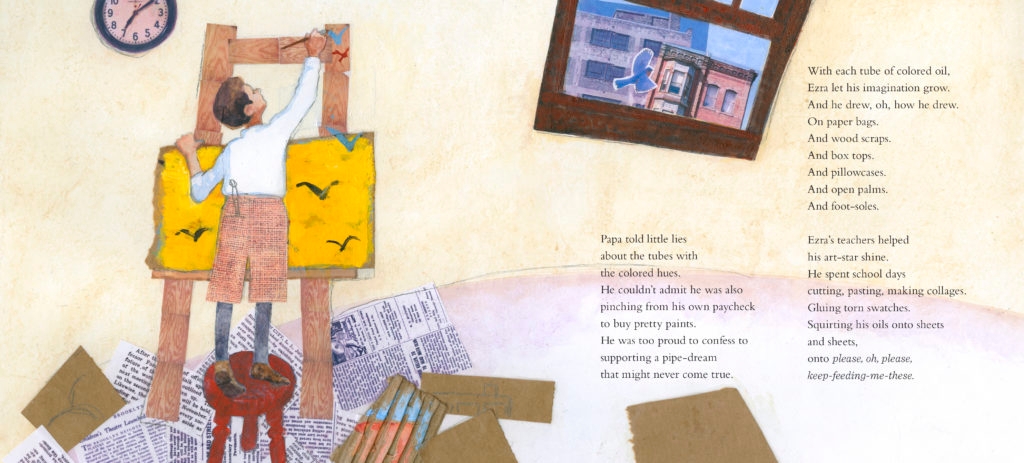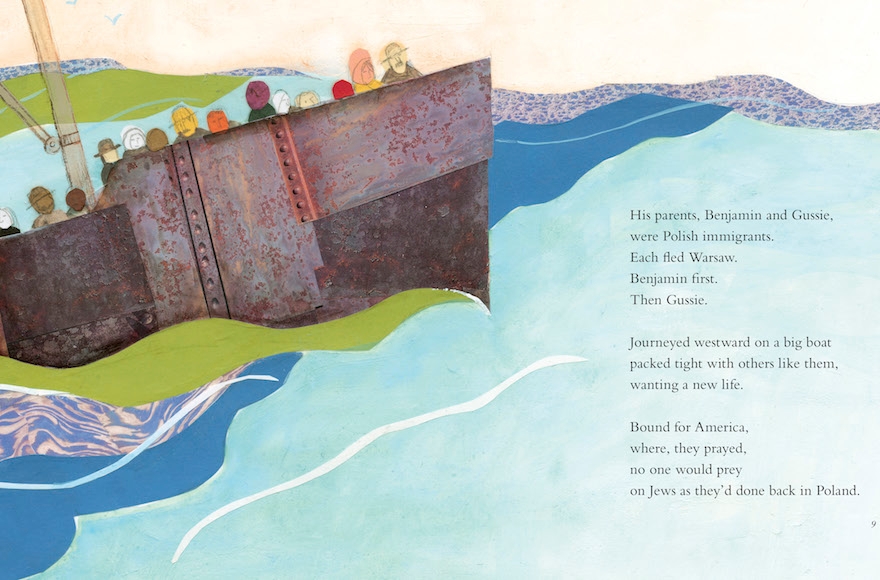As 2016 winds down to a chilly close, it’s time to say “Happy 100th Birthday” to Ezra Jack Keats, the celebrated author of “The Snowy Day.”
The classic book for children, published more than 50 years ago, is a tender story of a young African-American boy — clad in a now iconic red-hooded snowsuit — as he experiences the wonder of freshly fallen snow in the streets of his city neighborhood.
Now, to mark the centennial of Keats’ birth, the award-winning children’s book writer Andrea Davis Pinkney (“The Red Pencil,” “Sit-In: How Four Friends Stood Up by Sitting Down”) has penned “A Poem for Peter,” an enchanting, lyrical narrative that traces Keats’ life from the hardships faced by his immigrant parents to make ends meets, to his school days earning money painting street signs, to the discrimination he encountered as a Jew looking for work as an illustrator.
By pursuing his unlikely dream to become an artist, Keats left his mark on the world and opened the world of children’s books to all children.
From the opening page in “A Poem for Peter,” Pinkney weaves in the character of Peter, Keats’ beloved young fictional boy who continues to warm the hearts of young readers around the world.
“A Poem for Peter” comes to life with illustrations and collages by Lou Fancher and Steve Johnson that are inspired by Keats’ art, and also incorporate some of Keats’ original artwork. The result is a masterful marriage of story and art that will captivate and inspire readers of all ages.
When “The Snowy Day” was published in 1962, the seemingly innocent tale transformed the landscape of American children’s literature. Arriving at the height of the country’s civil rights movement, its young hero, Peter, was the first black child to take center stage in an illustrated book in the mainstream children’s market. The book became an instant best-seller and earned the 1963 Randolph Caldecott Medal, the most prestigious children’s book award.

A page from “A Poem for Peter” (Courtesy of Penguin Random House)
The book was also remarkable for its urban setting and set a new artistic bar for Keats’ bold blocks of color and imaginative use of collage. His art and life were the subject of a national touring exhibit that initiated at The Jewish Museum in 2011, the 50th anniversary of the book’s publication.
During the years Keats spent illustrating the books of other writers, he was struck by the absence of African-American children.
“My book would have him there simply because he should have been there all along,” he wrote in an article referenced in the exhibit’s catalog.
Even today, many are surprised to learn that Keats, born Ezra Jack Katz, was the New York City-born son of poor Jewish immigrants from Poland.
Keats grew up in East New York, a largely Jewish immigrant neighborhood of Brooklyn. During his years at Thomas Jefferson High School, he won a national competition for a painting titled “Shanytown.” Keats’ art drew upon the people and urbanscapes of his childhood, according to Martin Pope, his lifelong friend and president of the Ezra Jack Keats Foundation, a nonprofit that supports educational programs for children and schools.
Pinkney — born the year “The Snowy Day” won the Caldecott — is among newer generations of writers and artists who credit Keats as a major influence in their lives.
“My parents read it over and over and over,” Pinkney told JTA. “During happy and not so happy times, there was ‘The Snowy Day.'”In one passage of the book, Pinkney writes that Keats, like other Jews of the time, faced discrimination and decided to change his name. He eventually found work illustrating for publishers, including book jackets and art.
Additionally, in celebration of what would have been Keats’ centennial year, an animated special based on “The Snowy Day” is streaming on Amazon featuring Donielle Hansley, Laurence Fishburne and Regina King.
By the time of his death in 1983, Keats had illustrated more than 80 books, 22 of which he had written. Keats’ books have been translated into approximately 20 languages.
Pinkney noted that race is never mentioned in “The Snowy Day.”
“The staying power is the universal joy, exuberance and discovery that every child who goes out for a day of snow experiences,” she said. “It’s that simple.”






